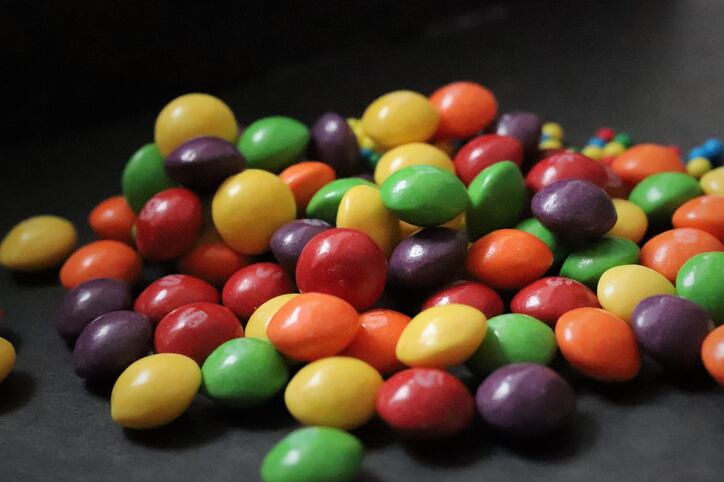In a 33 to 3 vote on Monday, the state Senate passed The California Food Safety Act, which would ban the manufacture, sale or distribution of products including brominated vegetable oil, potassium bromate, propylparaben and red dye No. 3.
While the bill is the first-of-its-kind, it is not the only of its kind. Similar legislation was also introduced in New York, and many stakeholders believe if California bans these food additives other states could follow. Even if the bill does not trigger a domino effect of similar legislation, it could create a de facto national ban as manufacturers forced to reformulate to make, sell and distribute their products in California would not likely sell older versions in other states.
If signed, the bill would go into effect in 2027 – giving manufacturers time to reformulate products and sell through current inventory.
TiO2 ban removed from California legislation
Earlier versions of the California bill also included TiO2, which delivers a bright, opaque whiteness that is used in products ranging from confections, including Skittles, to many dietary supplements.
The “eleventh hour” decision to remove TiO2 from the legislation is likely what allowed the bill to move forward as many influential industry stakeholders aggressively lobbied their representatives to protect their use of the whitener, which is banned in foods in the EU but which FDA reaffirmed as safe last winter.
“There were a lot of [California senate] members who came to Assemblyman [Jesse] Gabriel [who introduced the bill] with their concerns about it – clearly getting their talking points from the industry. There were enough of them it created a political hurdle. So, just like any other big piece of legislation, it was subject to negotiation and horse trading, and when titanium dioxide was removed from the list in the bill that removed significant industry opposition, including the California Chamber of Commerce, the Dairy Institute of California and the California Business Roundtable. So, some significant industry opposition dropped off,” Brian Ronholm, director of food policy at Consumer Reports, said this week at the Consumer Federation of America’s 46th Annual National Food Policy Conference in Washington, DC.
While Ronholm added supporters of the legislation, including Consumer Reports, “would have preferred not to take out titanium dioxide … having the four that are in there now [pass] in a vote of 33 to 3 in the Senate, certainly is a welcome development.”
He also noted there still a chance – although some would argue slim – that FDA will ban TiO2 at the behest of a Citizen Petition in which the Environmental Defense Fund and others ask FDA to revoke its approval for use in food on the grounds that the European Food Safety Authority determined TiO2 is not safe due to overall genotoxicity concerns
Industry stakeholders, including the Consumer Health Care Products Association, oppose the repeal.
New York legislation retains proposed TiO2 ban
TiO2 currently remains on the list of food additives that similar legislation passing through the New York state Senate seeks to ban, but that could change, suggested New York State Sen. Brian Kavanagh, who introduced the legislation.
“It is not a coincidence that the New York Bill started with the same five chemicals [as the California Food Safety Act,” he told attendees at the CFA conference.
He explained that budget concerns hindered activity on standard legislative items, including this bill, before the state’s legislative session ended in June. But, he said, “we have been watching closely what’s going on in California and we will have to consider decisions they make.”
Is FDA doing enough to oversee the safety of food additives?
Kavanagh acknowledged a state-by-state approach to food safety is not ideal, but he added that neither is a national regulatory environment allows industry to self-determine if ingredients are General Recognized As Safe.
“If you are trusting US chemical companies and producers of products … to determine what is safe and balance that appropriately in the public interest against their profit motive, I think you are making a big mistake. And I think there is a very long history … of American companies routinely exposing people to substances that are demonstrably unsafe,” such as cigarettes, asbestos, and lead in paint and fuel, he said.
While acknowledging the GRAS process is far from perfect, Martin Hahn, a partner at the law firm Hogan Lovells, was quick to defend FDA – noting if it sees a safety issue with an ingredient it can and does go after it.
“There’s this perception that that chemical industry is running amok and allowed to put all these things into our food supply, but there are legal standards,” he said, noting FDA has blocked new food ingredient proposals by his clients before when it sees safety concerns.
“I think they are doing their job really well,” he added.
Ronholm and Kavanagh agreed that FDA is not asleep at the wheel, but they added the agency does not have sufficient resources to thoroughly vet ingredients that companies introduce to the market after self-determining they are GRAS.
And that, Ronholm says, is where state reform can be a powerful tool for forcing change not just at the state level but the national level as well.

